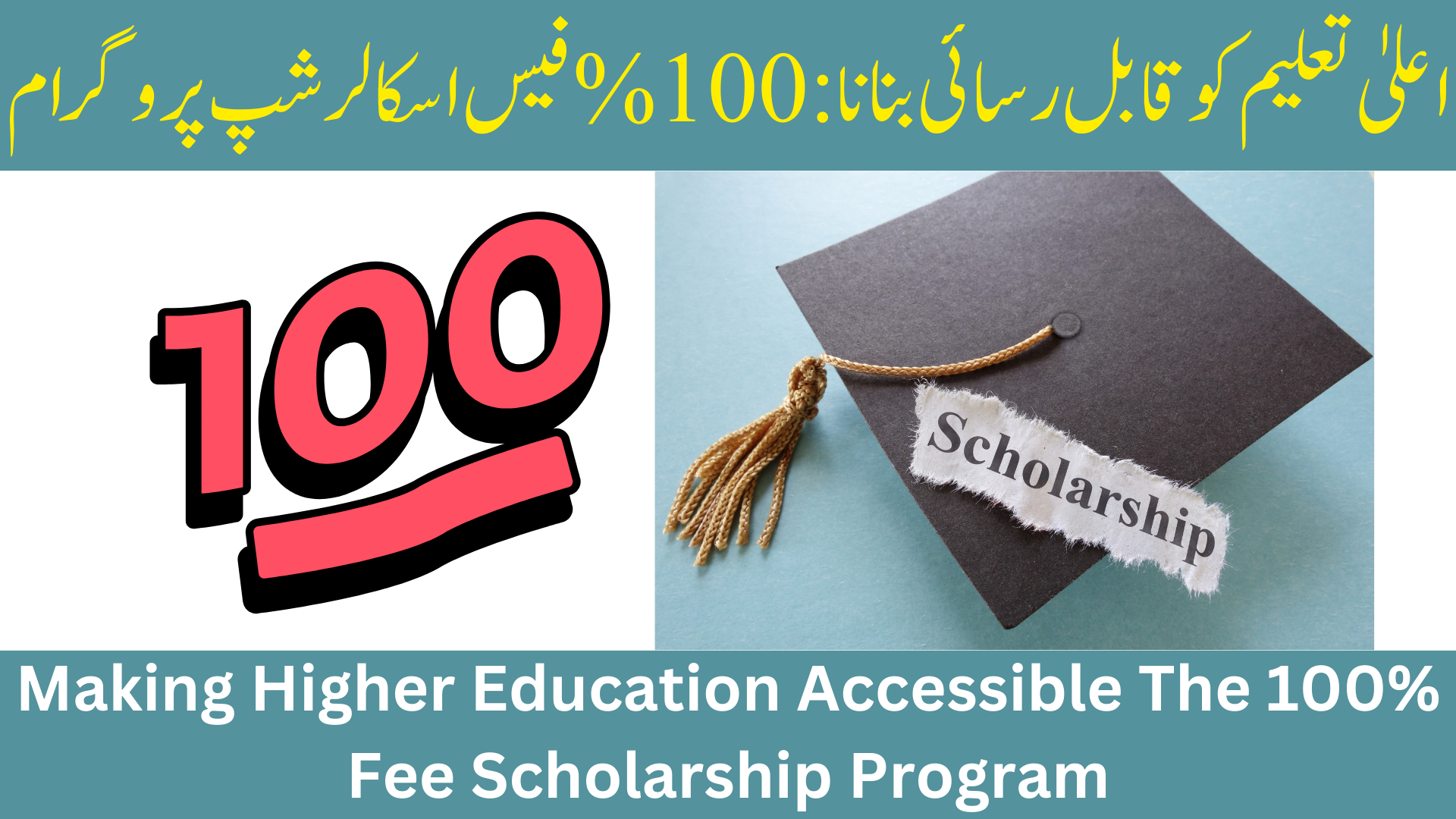Making Higher Education Accessible The 100% Fee Scholarship Program
The Punjab government has initiated a comprehensive program aimed at making higher education more accessible for low-income students through a 100% fee scholarship for BS (Bachelor of Science) students. This initiative seeks to support academically talented individuals who face financial constraints, enabling them to pursue their educational aspirations without the burden of tuition fees.
Objective of the Scholarship Program
The primary objective of this program is to eliminate financial barriers that hinder students from pursuing higher education, particularly those with demonstrated academic potential but limited financial resources. By covering all tuition fees, the program aims to encourage more students to enroll in BS degree programs across various disciplines.
Eligibility Criteria
To qualify for the 100% fee scholarship, applicants must meet the following criteria:
Good Academic Record: Applicants must have a high academic performance or a good GPA.
Financial Need: Demonstrated financial need based on family income.
Specific Courses: The scholarship may apply to designated fields of study or universities as per program guidelines.
How to Apply for the Scholarship
Students interested in applying for the scholarship should follow these steps:
Check Availability: Verify if the scholarship is offered at your chosen university and for the course you intend to pursue.
Prepare Documents: Gather academic records, proof of family income, and any other required documents.
Complete Application Form: Fill out the scholarship application form online or as directed by the university.
Submit Application: Submit the completed form along with supporting documents before the specified deadline.
Advantages of the Scholarship
This scholarship program offers several advantages to students and the community:
Financial Assistance: It alleviates financial burdens on students and their families.
Increased University Enrollment: Encourages more students from low-income backgrounds to pursue higher education.
Social Mobility: Provides opportunities for talented individuals to enhance their skills and contribute to society.
Contribution to Professions: Ensures that bright students can excel in various fields, contributing positively to national development.
Challenges and Solutions
Despite its benefits, the scholarship program faces challenges such as lack of awareness, complex application procedures, and limited availability. To address these challenges:
Awareness Campaigns: Develop informative campaigns to increase awareness among potential applicants and their families.
Simplify Application Process: Streamline the application process to make it more accessible and user-friendly.
Increase Funding: Allocate more resources to expand the number of scholarships available, thereby accommodating more deserving students.
READ MORE: CM Punjab Maryam Nawaz Launched Livestock Card Scheme For Farmers
ALSO READ: HBL’s Solar Financing Initiative: Making Solar Energy Accessible and Affordable
Conclusion
The 100% fee scholarship for BS students in Punjab represents a significant step towards equitable access to higher education. While challenges exist, ongoing efforts to enhance the program’s accessibility and effectiveness will contribute to the nation’s educational advancement and prosperity.
FAQs
1. Who can apply for the full fee scholarship in 2024? Students with a strong academic record, demonstrated financial need, and enrolling in specified fields of study are eligible to apply.
2. What is the application process in 2024? The process involves checking eligibility at the university, gathering required documents, completing the online application, and submitting it within the deadline.
3. What benefits does the scholarship provide in 2024? It offers financial relief, promotes university enrollment, supports social mobility, and enables talented students to contribute effectively to society.
4. What challenges does the scholarship program face in 2024? Challenges include lack of awareness, complex application procedures, and limited scholarship availability. Solutions include awareness campaigns, simplifying processes, and increasing funding allocations.


